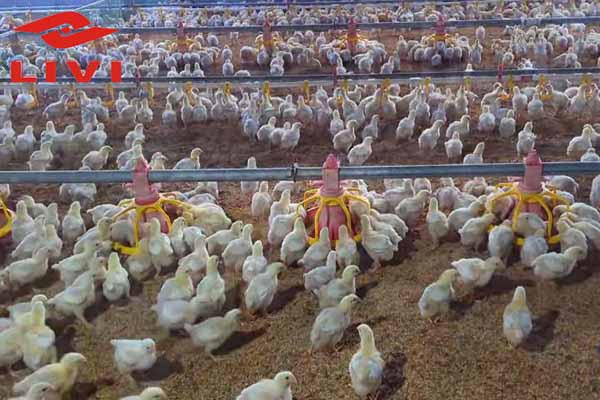Optimizing Large-Scale Farms with Automatic Poultry Cages in South Africa
Time : 2025-06-25
Automatic poultry cages are becoming an essential component for large-scale farms in South Africa, offering a myriad of benefits that enhance efficiency, reduce labor costs, and increase production yields. This article delves into the intricacies of these innovative cages, their implementation, and the impact they have on the poultry industry in South Africa.
The Evolution of Poultry Farming in South Africa
Poultry farming has seen significant growth in South Africa, with the country boasting one of the largest broiler chicken industries on the continent. Historically, farming has been labor-intensive and reliant on traditional, less efficient methods. However, the introduction of automatic poultry cages has marked a new era for the industry, promising to revolutionize poultry farming practices.
Understanding Automatic Poultry Cages
Automatic poultry cages are specifically designed to accommodate the needs of commercial poultry operations. These cages are engineered to optimize space, provide comfortable living conditions, and facilitate efficient management. Let’s explore some of the key features of these cages:
– Space Optimization: Automatic cages maximize space utilization by housing birds in a vertical stacking system. This approach allows for increased bird density without compromising on the overall farm layout.
– Ventilation: Advanced ventilation systems ensure adequate airflow and temperature control within the cages. This is crucial for maintaining optimal living conditions and preventing diseases.
– Automated Feeding: Fully automated feeding systems reduce labor costs and prevent feed wastage by dispensing feed in precise quantities.
– Watering Systems: Automated watering systems guarantee a constant supply of fresh water to the birds, crucial for their health and growth.
– Manure Management: Efficient manure collection systems reduce the risk of disease transmission and ensure easy clean-up, maintaining high hygiene standards.
Implementing Automatic Poultry Cages in Large-Scale Farms
The integration of automatic poultry cages into large-scale farms in South Africa requires careful planning and consideration of several factors:
– Farm Layout: The design of the farm should accommodate the dimensions and stacking requirements of the cages. It is essential to ensure that there is enough space for the movement of workers and equipment.
– Climate Considerations: South Africa experiences varying climates across different regions. Therefore, it is important to select cages that can withstand the specific weather conditions of the farm’s location.
– Budget and Investment: The initial investment in automatic poultry cages can be significant. However, the long-term cost savings and increased productivity can make it a worthwhile investment for large-scale farms.
– Training: Ensuring that the farm’s staff is trained in the operation and maintenance of the cages is crucial for successful implementation.
Benefits of Automatic Poultry Cages for Large-Scale Farms
The adoption of automatic poultry cages for large-scale farms in South Africa offers several advantages:
– Improved Production Yields: With better living conditions and efficient management systems, birds housed in automatic cages tend to grow faster and yield more meat.
– Reduced Labor Costs: The automation of various tasks minimizes the need for manual labor, resulting in lower labor costs.
– Enhanced Animal Welfare: Automatic cages provide a more controlled environment, which is conducive to the overall well-being of the birds.
– Improved Hygiene: Automated systems for feeding, watering, and manure management reduce the risk of disease transmission and make the farm easier to maintain.
– Sustainability: The efficient use of resources and reduction in waste contribute to a more sustainable poultry farming operation.
The Future of Poultry Farming in South Africa
As technology continues to advance, the poultry industry in South Africa is expected to see further developments in automatic poultry cages. Innovations such as smart cage technology, which integrates data analytics and IoT (Internet of Things) capabilities, will likely become increasingly common. These technologies will enable even more precise management of poultry operations, further enhancing efficiency and productivity.
Conclusion
The adoption of automatic poultry cages in South Africa’s large-scale farms is a testament to the continuous innovation and technological advancements in the poultry industry. These cages offer a range of benefits that can significantly enhance the efficiency and sustainability of poultry farming operations. As the industry continues to evolve, the integration of cutting-edge technologies in automatic poultry cages will play a pivotal role in shaping the future of poultry farming in South Africa.












